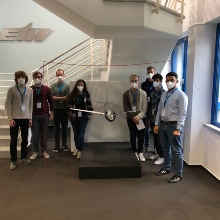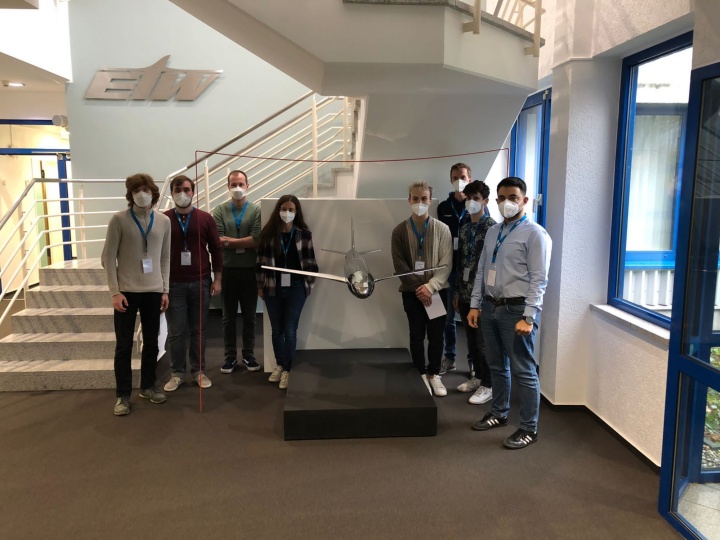The participants had been selected from applicants at the universities of Stuttgart, Aachen, Braunschweig and Munich participating in FOR 2895, as well as DLR. The first group participated in the campaign in which steady-state and transient optical surface pressure measurements using the pressure sensitive paint (PSP) technique were carried out on the generic XRF-1 aircraft configuration. DLR and ETW have subsequently used this configuration beyond FOR 2895 to improve their methods and tools for flow field measurements using Particle Image Velocimetry (PIV), and the second group was able to participate in these efforts. The objective of the actual test campaign was to investigate the influence of a UHBR (Ultra High Bypass Ratio) flow-through engine nacelle on the flow on the underside of the wing at very low angles of attack at the edge of the flight envelope. This addresses current industrial trends towards the use of ever larger engine nacelles and is intended to aid in understanding the aerodynamic challenges associated with it. The PSP measurement technique can be used to explore the dynamics of the three-dimensional shock front in this process. In addition to an introduction to the objectives and content of FOR 2895 by the speaker Dr. Thorsten Lutz (University of Stuttgart) and a welcome by the head of ETW Dr. Guido Dietz, the participants received a deep introduction into the PSP measurement technique by Dr. Christian Klein (DLR) and into the PIV measurement technique by Janosch Agocs (DLR), respectively. The responsible test engineer Matthias Schulz (ETW) explained to the participants in detail the advantages and unique possibilities of cryogenic pressurized wind tunnels and the processes at ETW, with a focus on the measurements in the present project. The presentations were rounded off by a presentation of Sebastian Spinner from DLR, PhD student of FOR 2895, on the specific research objectives of the ongoing measurement campaign.
A highlight of the events was certainly the participation in a measurement run in the control room of ETW, where the participants could witness the concentration and professionalism of the responsible test engineers and technicians. During the tour through the facilities of ETW, as well as during the visit of its small pilot facility PETW, the participants were given an interesting and deep insight into the experimental facilities, where none of the numerous interested questions remained unanswered. The participants also had the opportunity to marvel at the instrumented wind tunnel model from close range. Everyone became aware of the enormous effort and care required to perform these highly accurate measurements. At the same time, the possibilities of cryogenic pressurized wind tunnels, as offered by only two wind tunnels worldwide, became clear: Full aircraft configurations can be experimentally tested up to Reynolds and Mach numbers as they occur in real flight. In addition, the independent variation of Reynolds number, Mach number as well as dynamic pressure, i.e. the aeroelastic deformation of the aircraft models is possible, which is highly valuable for the analysis and aerodynamic optimization of aircraft designs.



